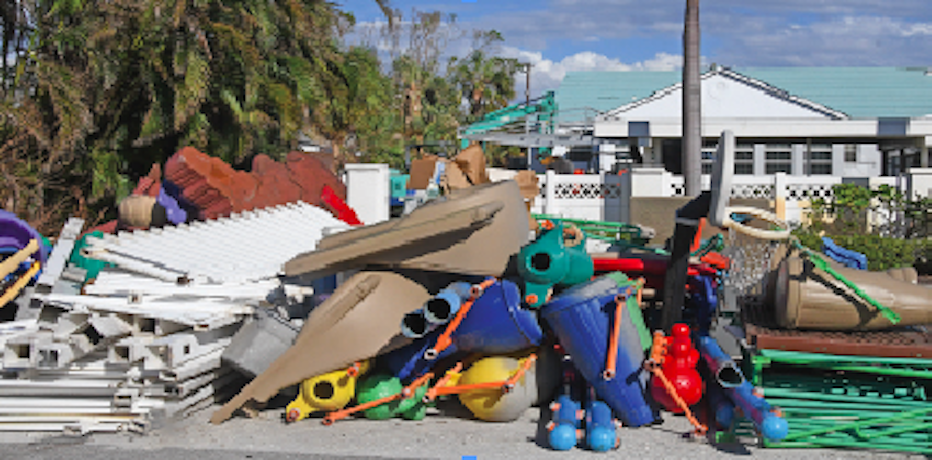Are we okay?Telltale signs of stress tell the story after a traumatic event like Hurricane Ian … particularly regarding our children

Many say that the climate of a community is best monitored by the mental health of the children who live there. Are they safe? Are they happy? Do they have plans for their future? Do they have faith?
While it is true that going through a hurricane that stayed so strong for so long is not the same as being in a war zone, there are still markers of trauma that can be found that are very similar. In fact, many children and adults sometimes feel guilt over their strange post-traumatic feelings … as if they don’t deserve to have them. Adults may eschew that notion and decide that the best way to deal with the feelings associated with living through such an event, or coming home to a demolished house, is to just wade through them and move on. That usually doesn’t even work for adults, so why expect our children to be successful in tamping down their feelings and not acknowledging that they are real?
Christine Oliver, Head-of-School at The Island School, said that before returning to school, faculty members received training from Christine Thompson, a licensed mental health counselor who has been working with TIS for years. In Christine’s words, she “led a discussion on recognizing the signs and symptoms of trauma in children, common reactions, how to talk to a child who has experienced a traumatic event, and when to seek outside help.”
In addition, Thompson was on campus the first few days after everyone was back at school to assist with the transition from home to school after Hurricane Ian. If students wanted to talk to her about what they went through, they were able to meet with her.
“In general, we have found that our students are resilient and grateful to be back to a normal routine,” Oliver said. “Many students expressed that they were glad to see their friends and teachers, and we heard that the first day back to school was the ‘best day ever.’ Of course, we will continue to monitor students for signs of stress and trauma response, as we learned that some children’s responses may be delayed.”
Sometimes just the normality of a school day and getting out of the proximity of parents who might be dealing with a lot of stressful hurricane-related issues can make a world of difference. However, that doesn’t mean that some things that are usually defined as “normal” won’t elicit certain reactions from children that they didn’t before.
For instance, a 15-year-old admitted that every time the wind blew harder than normal or even if it rained, she and her sisters got very nervous. Their ceiling fell in and windows blew in during the storm, which they stayed for. Even two days later, pieces of the ceiling were still falling down, and a week later when this area received a torrential amount of rain, her little sister’s ceiling caved in. She explained that they were always afraid that more of the building would collapse every time it rained or the wind blew.
Younger children can display those traits as well, but they also have some traits of their own. They often look to their parents or older siblings for guidance when it comes to sudden changes in emotion, and some things that a child isn’t naturally afraid of will become scary if they sense that feeling in their older family members.
Kelly Carpenter, Director of the Boca Grande Preschool, agreed with those sentiments. She has not been able to see many of the children from the school since the storm, but she said that she was able to visit them one day at the informal care center established at Lighthouse United Methodist Church.
“I was able to get lots of hugs from them there,” she said, adding that she felt it was important for them to know she was all right and that things would eventually return to what they are accustomed to.
The school has been in contact with all the families to offer support and to see if the school can help in any way. There is a great diversity in the amount of dislocation, damage and trauma, Carpenter said. Each case is unique, and the children will need varying degrees and types of support.
She noted that children are resilient, but they tend to “absorb the experiences of everyone else, especially when their normalcy is upset.” She said it is natural for children to be extra shy or want to stay close to their parents or others they feel safe with. It also is common for small children to be “out of sorts,” which should be handled gently. They may regress for a while and want to be treated more like a baby, sucking their thumb or having trouble with bathroom training.
“The more positivity they can see, and the quicker they can get back to what they are familiar with, the better it will be,” Carpenter said.
According to Dr. Raymond James at the Boca Grande Health Clinic, one of the most important things is that people should not feel alone or try to bottle up their feelings.
“Talk about how you feel and share your feelings with others, and we will all help each other recover.” he said. “It is a slow, difficult emotional process, but together our community will recover. Already I see green buds on the trees, and the birds and butterflies are back, and the dolphins are feeding along the beach.”
The Florida Department of Health and Florida Department of Children and Families have partnered with BetterHelp to offer three months of free mental health services via online therapy to those impacted by Hurricane Ian. To access these free services, visit betterhelp.com/voucher and enter code: HurricaneIan.









